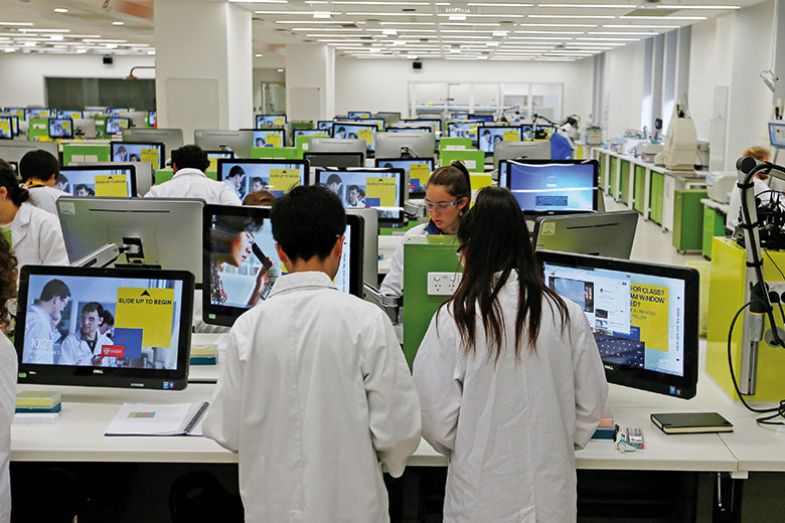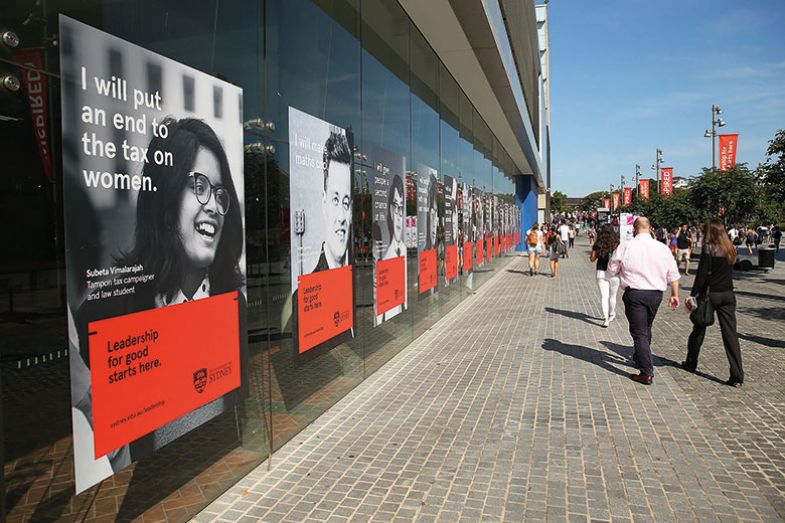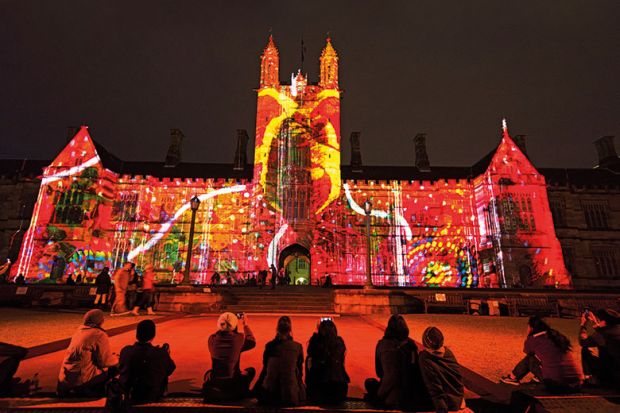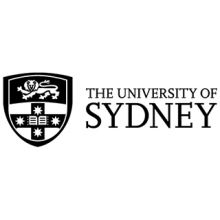Browse the full results of the World University Rankings 2020
In 2008, the University of Sydney was convinced that it was, by any measure, the best and richest in Australia. It held on to those convictions heroically in spite of the available evidence; evidence such as ageing infrastructure that needed A$321 million (£182 million) of backlog repairs and maintenance, and a gradual decline since the 1970s of its undisputed dominance of national research grant income.
The university was still attractive to many of the country’s most able students, but newer and nimbler competitors were luring many away to more innovative offerings. Sydney was, as the rankings showed, still globally highly ranked, but it was in danger of losing its position.
The core problem we faced was one shared by many fine research institutions: the university was not a single institution, but a loose association of 16 faculties, whose influence in university decision-making had more to do with internal politics than either the quality of their work or their contribution to the university’s financial sustainability.
More than 10 years on, the institution looks very different. We are in the process of writing the third in a series of iterative university strategies, with a clear sense of direction. The campus has been transformed with billions of dollars of investment; we have simplified our faculty structure from 16 to five; and we have reduced the complexity of our undergraduate offerings from a chaos of 122 degrees to variations on just 25, all sharing common and innovative characteristics to prepare students for the fourth industrial revolution.
We have also invested heavily in multidisciplinary research and teaching at both large and small scale as a catalyst for the move from 16 faculties to one university; we have significantly increased our partnership research income; we have finished Australia’s largest ever philanthropic campaign; and we have simplified our still complex administrative structures.

This sounds like the hero story that every university vice-chancellor writes for themselves. But the interesting thing is not so much these achievements as the journey that we have been on and the processes of change. In particular, we have focused on issues concerning decision-making and the culture of the institution; perhaps not obvious places to start, but areas of focus that have been very fruitful.
Sydney is a behemoth: it is both large by any standard (with about 70,000 students), and offers teaching in more fields than almost any university in the world. So I offer our experience in these two areas as a case study of bringing change to an institution not easy to turn.
As regards decision-making, the first choice that I made as a new vice-chancellor was that almost no resolutions would be taken in my office, but in a fortnightly meeting of faculty representatives against transparent financial and quality metrics. Sunshine is, as US litigator Louis Brandeis said, a great disinfectant, especially against spurious arguments or indulgent behaviour.
In this process the goal was to break down the traditional university tension between portfolio owners such as the deputy vice-chancellors for research and education, and between vice-principals and deans. But it was also to help each part of the university to understand how, in a still rather devolved system, individual decisions impacted on the work of others across the institution, and of the university more generally.
This was all accompanied by the introduction of a new allocation mechanism for resources and costs that made the flow of resources in the institution more transparent. Over time, the deans were no longer advocates for individual faculties in a complex political ecosystem, but team players better able to understand contestable choices and decision trade-offs. And the portfolio owners became much more closely attuned to the issues facing the diverse academic communities that make up the university. At the same time, we ensured that our governing body – which in Australia is required to be almost entirely external – was equipped with the skill set that it required to oversee our work.
This move to collective decision-making was supported by a broader move to deep and extensive consultation in the development of our strategies. Our first strategic exercise set the tone: it involved 18 months of consultation with thousands of staff, students, alumni and external stakeholders as we educated the university community about the need for a coherent strategy and set the institution on a course.

As regards culture, our work has been very explicit. The second strategic exercise was built around the usual themes of education and research, but also contained a third section on our culture. This involved 12 months of consultation about our values. Surprisingly, staff were more interested in this topic than any other in the writing of what was, as regards education and research, quite a radical strategy. In response to that consultation, we wrote a consultation paper on which we then consulted staff again.
Two key areas of concern arose from these consultations; those of diversity and of disagreeing well. Reflecting on those areas as an institution stood us in good stead as the culture wars currently raging in Australia broke out. A comprehensive programme of work built around our values has yielded significant and measurable change.
In addition, we have focused very closely on leadership development to ensure that our academic leaders have a clear understanding of their work in strategy, talent management, philanthropy and external engagement; to equip them with the technical skills that they need to do their jobs; and to help them think through the implications of our values for their work in the schools and faculties.
It is an odd characteristic of our sector that we have traditionally asked people to manage incredibly complex institutions – ours now has a turnover of about $2.6 billion – with little formal preparation for the challenges that they will face.
Strong decision-making and a focus on culture: these rather unglamorous areas of focus have enabled us quickly to shift the performance of an enormous institution. The process has, of course, at times been very painful. Few institutions are more wary of change than those with a venerable tradition of excellence. But by any of the measures we are in a stronger position than we were a decade ago.
Michael Spence is vice-chancellor and principal at the University of Sydney
Register to continue
Why register?
- Registration is free and only takes a moment
- Once registered, you can read 3 articles a month
- Sign up for our newsletter
Subscribe
Or subscribe for unlimited access to:
- Unlimited access to news, views, insights & reviews
- Digital editions
- Digital access to THE’s university and college rankings analysis
Already registered or a current subscriber? Login










